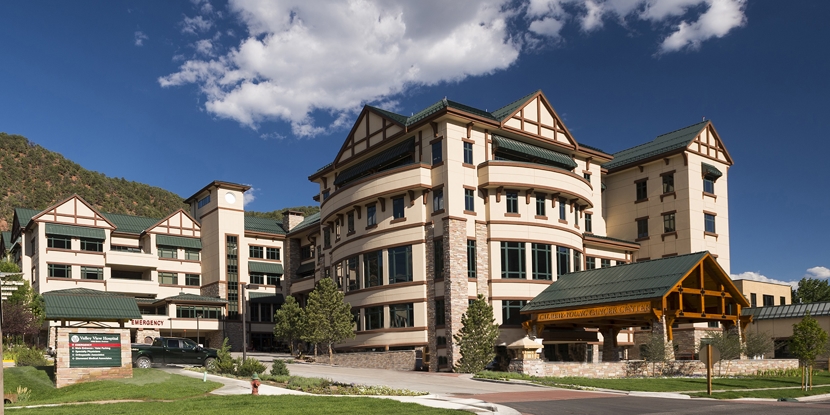BENIGN BREAST DISEASE CARE
There are many benign (non-cancerous) breast conditions that can develop over the course of a woman’s life. Some of the more common are listed here. If you have a question or concern or if you find a lump, the Breast Center at Valley View can help with diagnosis and treatment.
COMMON CONDITIONS
FIBROCYSTIC CHANGES
Changes in hormone balances during normal, monthly menstrual cycles can create, for some women, symptomatic breast changes that are referred to as fibrocystic changes. Fibrocystic changes also can appear as lumps or as thickening of the breast tissue. It is typically uncommon for postmenopausal women to have symptomatic breast changes due to a lack of hormone stimulation of breast tissue. Fibrocystic changes can occur in one or both breasts and are the most common cause of benign breast lumps in women age 35 to 50.
SIMPLE CYSTS
Simple cysts are benign fluid-filled sacs that usually occur in both breasts. They can be single or multiple and can vary in size. Tenderness and lump size often change with the woman’s menstrual cycle. Cysts may also be affected by caffeine (coffee, tea, chocolate, energy drinks).
FIBROADENOMAS
Fibroadenomas are the most common benign solid tumors found in the female breast. They are round, rubbery, slippery lumps that move freely in the breast when pushed. They form as the result of excess formation of lobules (milk-producing glands) and stroma (connective tissue in the breast). Fibroadenomas are usually painless. They occur most often between the ages of 20 and 40 and are more common in African-American women.
INTRADUCTAL PAPILLOMAS
These are small, wart-like growths in the lining of the mammary duct near the nipple. They usually affect women 40 to 50 years of age and can produce bleeding from the nipple or nipple discharge.
TRAUMATIC FAT NECROSIS
This condition occurs when there is trauma (sudden injury) or surgery to the breast. This causes fat to form in lumps. The lumps are usually round, firm, hard, single, painless and in the area of a surgical scar.
WHAT SHOULD I DO IF I FIND A LUMP IN MY BREAST?
Call your provider. The Breast Center at Valley View is available and will work with your primary care or women’s health provider to determine if the lump is benign. Changes to look for:
- An area that is distinctly different from any other area on either breast
- A lump or thickening in or near the breast, or in the underarm that persists through the menstrual cycle
- A change in the size, shape, or contour of the breast
HOW ARE BENIGN BREAST CONDITIONS DIAGNOSED?
If you discover a lump in your breast, the team at the Breast Center can help diagnose your condition to ensure it’s noncancerous, then determine a treatment plan. At your benign breast disease evaluation, you can expect the following:
- A detailed health history will be taken.
- A thorough breast exam will be performed, checking for lumps or other changes in the breast tissue.
- Breast imaging (mammogram and/ or ultrasound) may be performed to determine if the lump is a solid mass or filled with fluid.
-
Other diagnostic tests may be needed, such as:
- Fine needle aspiration (FNA): This is a non-surgical form of breast biopsy in which a small needle is used to withdraw a sample of cells from the breast lump. If the lump is a cyst (fluid-filled sac), removal of the fluid will cause the cyst to collapse. If the lump is solid, cells can be smeared onto slides for examination in the laboratory.
- Core biopsy: This is similar to FNA, but a larger needle is used because actual breast tissue is removed, rather than a sampling of cells. A sample of the lump is removed, but the whole lump is not removed. The types of core biopsies include ultrasound-guided core biopsy and stereotactic core biopsy.
- Ultrasound-guided core biopsy: This is a tissue sampling technique that does not require surgery. A biopsy needle is placed into the breast tissue. Ultrasound helps confirm the needle placement using sound waves reflected off breast tissue so the exact location of breast tissue is biopsied. The type of echo varies with each type of tissue. Ultrasound can distinguish many benign lesions, such as fluid-filled cysts, from solid lesions. Tissue samples are then taken through the needle.
- Stereotactic core biopsy: A biopsy needle is placed into the breast tissue. Mammography images help confirm the needle placement using digital imaging so the exact location of breast tissue is biopsied. Tissue samples are then taken through the needle.
Cells or tissue that is removed are given to a pathologist, a physician who specializes in diagnosing abnormal tissue changes. You may return to the health care provider for another evaluation in a few weeks.
WHAT ARE TREATMENT OPTIONS?
Most benign breast conditions do not require treatment besides routine screening with annual mammograms and clinical exams. Evaluation of a benign breast condition will likely garner further testing to rule our breast cancer. Once your condition is ruled to not put you at increased risk for breast cancer, there are several noninvasive treatment options that may be used.
- Fibrocystic breast changes do not require treatment. Your physician may recommend therapies that can help relieve monthly tenderness.
- Simple cysts that are large and painful can be treated through fine needle aspiration. After fluid is drawn from the cyst, the cyst collapses, and the pain goes away.
- Fibroadenomas may be surgically removed if they are above a certain size and painful.
- Intraductal papillomas are removed surgically.

